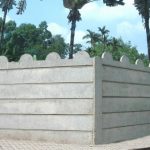Information to provide in scheme design:
● Thickness of slab spanning in one direction
● Size of secondary and primary beams
● Clear floor height
Reasons to use this slab type:
Capabilities
● Flexible for future additional and alteration designs
● Accommodates heavy utility systems and other loading
● Not a lot of maintenance cost needed
● Accommodates slab openings for services installation and distribution
● Strong resistance to sound, fire, vibration, and heat
● Flat soffit decreases concrete spalling
● Provides robustness
● Accommodates design for irregular grid lines and different shapes of buildings
Construction
● Repetitive construction of components, which decreases the learning curve, construction cost, and construction schedule
● Local experience of construction of beam slabs
Advantages over other slabs:
Beam Slab vs Flat Slab
● Beam slabs are more common, making them more cost and time efficient
● Beam slabs can provide longer spans
● Beams slabs can accommodate slab openings and future alteration in design
● Beam slabs can be designed for irregular grid lines and different shapes of buildings
● The structures in flat slabs are heavier than those of beam slabs, so beam slabs are less expensive due to less cost in materials used for foundation
● In Flat Slabs, not a lot of stiffness provided for wind resistance if there are no core walls
Beam Slab vs Ribbed Slab and Waffle Slab
● Beam slabs uses a more common formwork that that of ribbed/waffle slabs, which saves time and cost
Disadvantages
● Less flexibility with size and location of slab openings due to limitations on penetrations
● Larger structural depth which requires construction of a heavy foundation at times
● More labor needed for complicated reinforcement positioning for downstand beams
● Penetrations through beams will affect beam strength and clash and placement issues with reinforcement in beams



Comments are closed